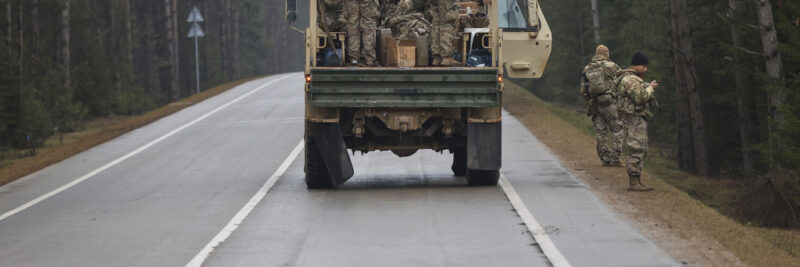Polish Troops Aid In Lithuania 'Search and Recovery' For Four Missing US Soldiers
In a dense and unforgiving stretch of Lithuania’s training grounds, a multinational recovery effort is underway after four U.S. Army soldiers vanished during a routine operation gone wrong. The mission, initially centered on recovering a disabled vehicle, has now become a desperate search for the men who never returned—an ordeal stretching from the forests of Pabradė to the desks of top military officials in Washington, Vilnius, and Warsaw.
The soldiers, based out of Fort Stewart, Georgia, were traveling in an M88 Hercules armored recovery vehicle early Tuesday when contact was lost. That vehicle was later found submerged near a pressurized gas pipeline within the Lithuanian training zone, located just six miles from the Belarusian border. But the soldiers themselves were nowhere to be found.
Since then, Lithuanian, U.S., and Polish personnel have coordinated one of the most complex and high-stakes search operations in recent memory. Thick forests, mud, rain, and swamp-like conditions reminiscent of Alaska have made the terrain nearly impassable—requiring specialized dredging and damming equipment just to access the submerged vehicle. Dive teams, helicopters with thermal imaging, and engineering units have worked day and night.
“The terrain is incredibly difficult,” said Lithuanian Defense Minister Dovilė Šakalienė. “But we are not giving up—not for one moment.”
The scope of the effort reflects more than just logistical complexity. For Lithuania and Poland, both NATO allies bordering an increasingly aggressive Russia, this is not merely an operational matter. It is deeply personal. Šakalienė, in an emotional interview, underscored that Lithuania views American soldiers as its own, saying: “We will not leave them behind.”
Poland, too, has mobilized with urgency. Deputy Prime Minister Władysław Kosiniak-Kamysz confirmed the deployment of Polish military engineers and frogmen, noting that their presence was a direct response to a request from allies. “#StrongerTogether,” he wrote—signaling not just alliance obligations, but a unified will.
As of Thursday, major steps had been taken to make the site workable. The gas line was depressurized, environmental agencies dispatched dredgers and bulk piping, and divers were preparing to attach tow cables to the vehicle. Still, officials cannot confirm whether the soldiers are trapped inside or managed to escape before the vehicle sank.
“We don’t know yet,” Šakalienė said plainly. “But we are not losing hope.”
U.S. Army Europe and Africa has classified the mission as a “search and recovery” effort, but remains resolute. “Cold, rain, mud, water—none of these things will stop us from bringing our soldiers home,” read an official statement on X.
The White House has remained publicly silent. Defense Secretary Pete Hegseth, speaking from Japan, emphasized that training is never routine, and praised the allied response. President Donald Trump, asked about the situation, said he had not yet been briefed.


